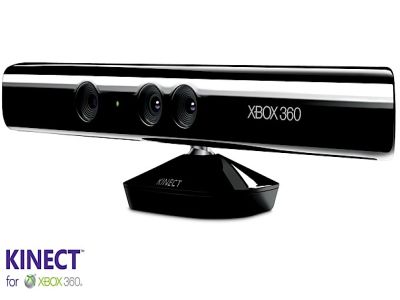Kinect for Windows to Get Windows 8 Support Next Month
Kinect for Windows will support Windows 8 desktop applications starting next month.
The Kinect for Windows blog reports that the PC version of Microsoft's motion detection gadget will receive an update to the runtime and software development kit (SDK) on October 8. This update will add support for Windows 8 desktop applications – those designed to be run within the Desktop environment and not the Modern UI interface – and enable businesses to do more with Kinect for Windows.
"We are committed to opening up even more opportunities for the creation of new end user experiences, writes Craig Eisler, General Manager of Kinect for Windows. "We’ll be adding features such as expanded sensor data access -- including color camera settings and extended depth data -- to continue to inspire innovative uses of the Kinect for Windows technology in new and different places."
The October update will also include support for Microsoft .NET 4.5 and Microsoft Visual Studio 2012. Additional tools and samples are planned for October, such as a new sample that demonstrates a "best in class" UI based on the Kinect for Windows Human Interface Guidelines. Even more, Kinect for Windows will launch in China on October 8, and then in Chile, Colombia, the Czech Republic, Greece, Hungary, and Poland "this fall."
"By the end of the year, Kinect for Windows will be available in 38 markets and we will have shipped two significant updates to the SDK and runtime beyond the initial release—and this is this just the beginning," Eisler writes. "Microsoft has had a multi-decade commitment to natural user interface (NUI), and my team and I look forward to continuing to be an important part of that commitment. In coming years, I believe that we will get to experience an exciting new era where computing becomes invisible and all of us will be able to interact intuitively and naturally with the computers around us."
Microsoft launched Kinect for Windows seven months ago in 12 markets after it became obvious that the PC sector wanted the motion-sensing gadget as well. In a visual sense, it looks identical to the Xbox 360 version, but this model was designed to work at close range (as close as 50 centimeters) and on Windows 7-based desktops and laptops. The USB cable is shorter and features a small dongle so it can squeeze in with other connected USB devices.
Contact Us for News Tips, Corrections and Feedback
Get Tom's Hardware's best news and in-depth reviews, straight to your inbox.

Kevin Parrish has over a decade of experience as a writer, editor, and product tester. His work focused on computer hardware, networking equipment, smartphones, tablets, gaming consoles, and other internet-connected devices. His work has appeared in Tom's Hardware, Tom's Guide, Maximum PC, Digital Trends, Android Authority, How-To Geek, Lifewire, and others.
-
Zetto "Microsoft has had a multi-decade commitment to natural user interface (NUI)"Reply
Oh yes, moving boldly Forward, into the future.
Exciting isn't it? Can't wait for the possibilities this tech will open up. -
bystander We have tablets and touch screens from the Star Trek universe. We now have the UI from "The Minority Report", what's next?Reply -
Zetto bystanderWe have tablets and touch screens from the Star Trek universe. We now have the UI from "The Minority Report", what's next?Reply
Holodeck ftw -
4745454b I'm tempted to buy this just for the "Minority Report" abilities. $200 seems a bit steep however. (Price from Amazon website.)Reply -
I will totally buy that, it's much more interesting and useful as a general interface than it is for gameReply
-
DRosencraft It seems cool, but it's not terribly useful. It's very useful for selecting things, replacing a mouse for most of the stuff we use a mouse for today, but that's really about it. As a gaming tool it seems to have a novelty aspect to it, but not particularly favorable, and it isn't going to replace a keyboard for most of what we se a keyboard for. Again, cool, but not exceptionally useful.Reply -
chulak 4745454bI'm tempted to buy this just for the "Minority Report" abilities. $200 seems a bit steep however. (Price from Amazon website.)Reply
A good wireless mouse and keyboard costs over $100. Add to that a decent HD web cam and you're fast approaching, if not over $200. This minus the technology convergence that the Kinect gives you. I think $200 is a fair price. This is going to be killer in the HTPC space.
